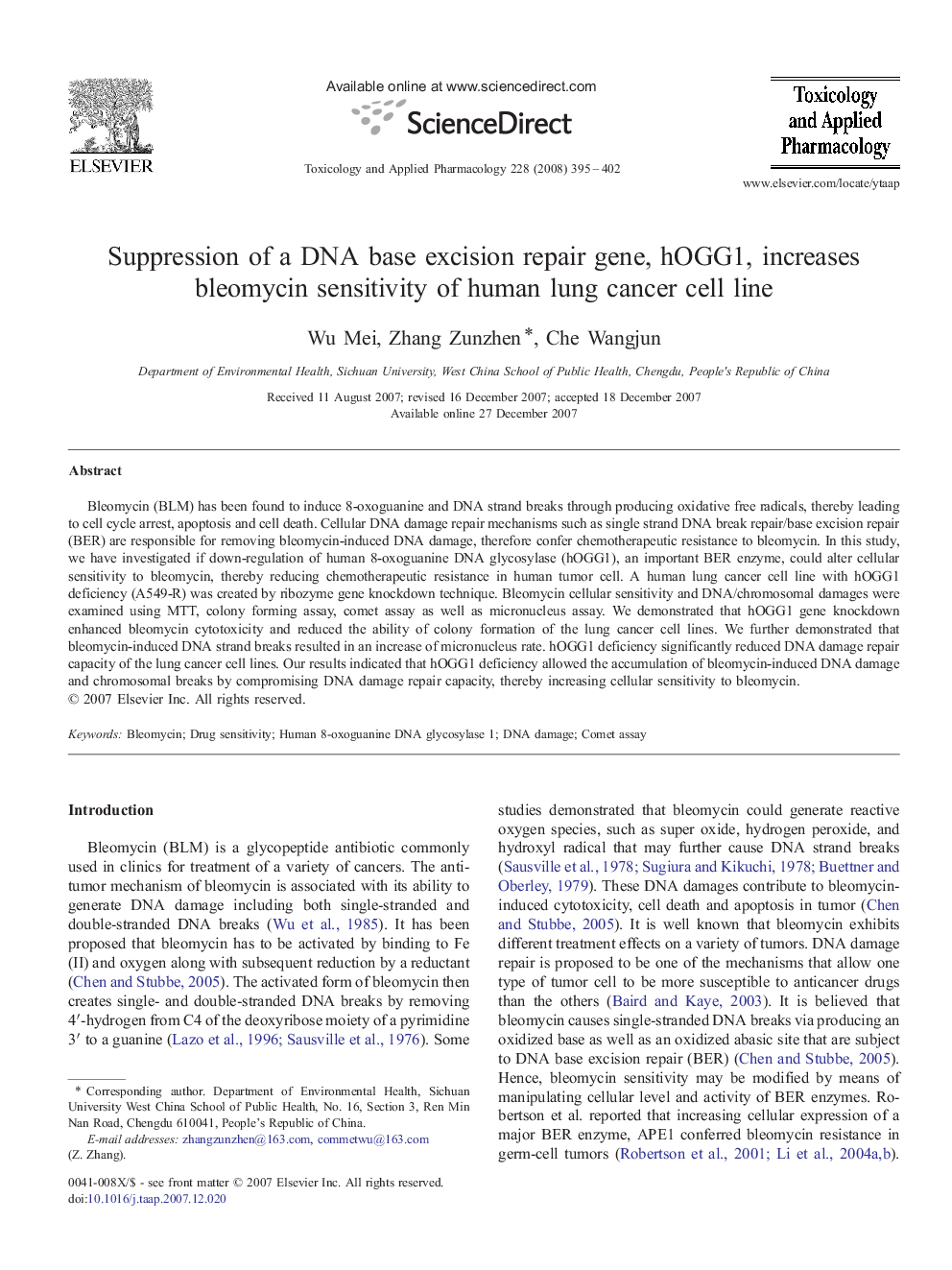| کد مقاله | کد نشریه | سال انتشار | مقاله انگلیسی | نسخه تمام متن |
|---|---|---|---|---|
| 2570616 | 1128593 | 2008 | 8 صفحه PDF | دانلود رایگان |

Bleomycin (BLM) has been found to induce 8-oxoguanine and DNA strand breaks through producing oxidative free radicals, thereby leading to cell cycle arrest, apoptosis and cell death. Cellular DNA damage repair mechanisms such as single strand DNA break repair/base excision repair (BER) are responsible for removing bleomycin-induced DNA damage, therefore confer chemotherapeutic resistance to bleomycin. In this study, we have investigated if down-regulation of human 8-oxoguanine DNA glycosylase (hOGG1), an important BER enzyme, could alter cellular sensitivity to bleomycin, thereby reducing chemotherapeutic resistance in human tumor cell. A human lung cancer cell line with hOGG1 deficiency (A549-R) was created by ribozyme gene knockdown technique. Bleomycin cellular sensitivity and DNA/chromosomal damages were examined using MTT, colony forming assay, comet assay as well as micronucleus assay. We demonstrated that hOGG1 gene knockdown enhanced bleomycin cytotoxicity and reduced the ability of colony formation of the lung cancer cell lines. We further demonstrated that bleomycin-induced DNA strand breaks resulted in an increase of micronucleus rate. hOGG1 deficiency significantly reduced DNA damage repair capacity of the lung cancer cell lines. Our results indicated that hOGG1 deficiency allowed the accumulation of bleomycin-induced DNA damage and chromosomal breaks by compromising DNA damage repair capacity, thereby increasing cellular sensitivity to bleomycin.
Journal: Toxicology and Applied Pharmacology - Volume 228, Issue 3, 1 May 2008, Pages 395–402